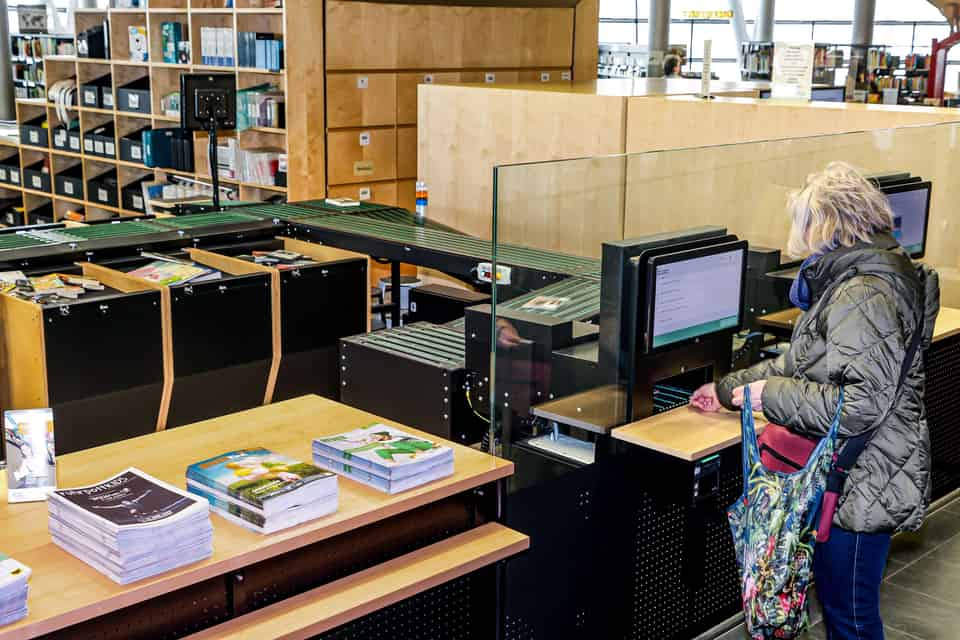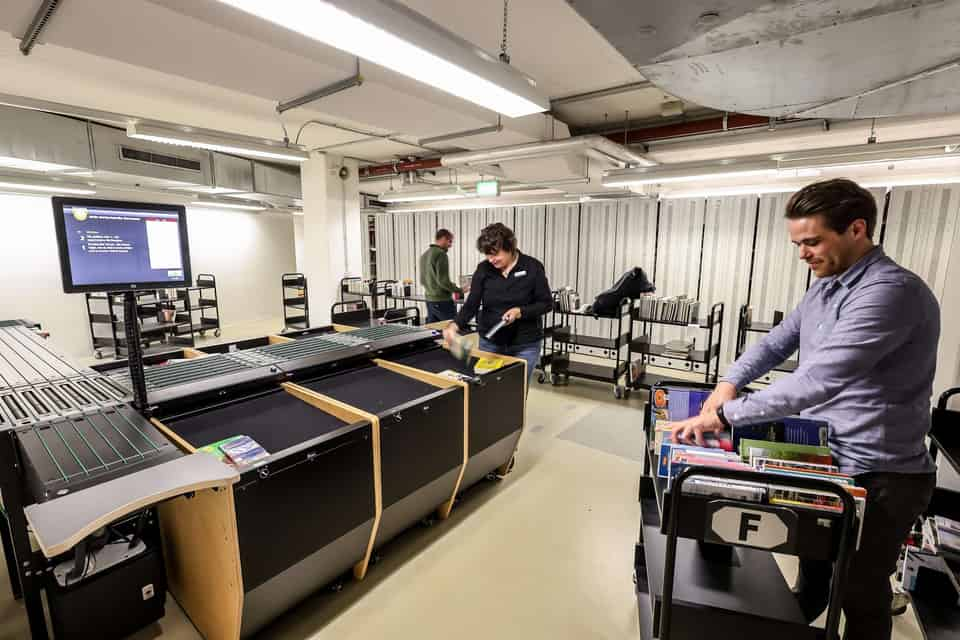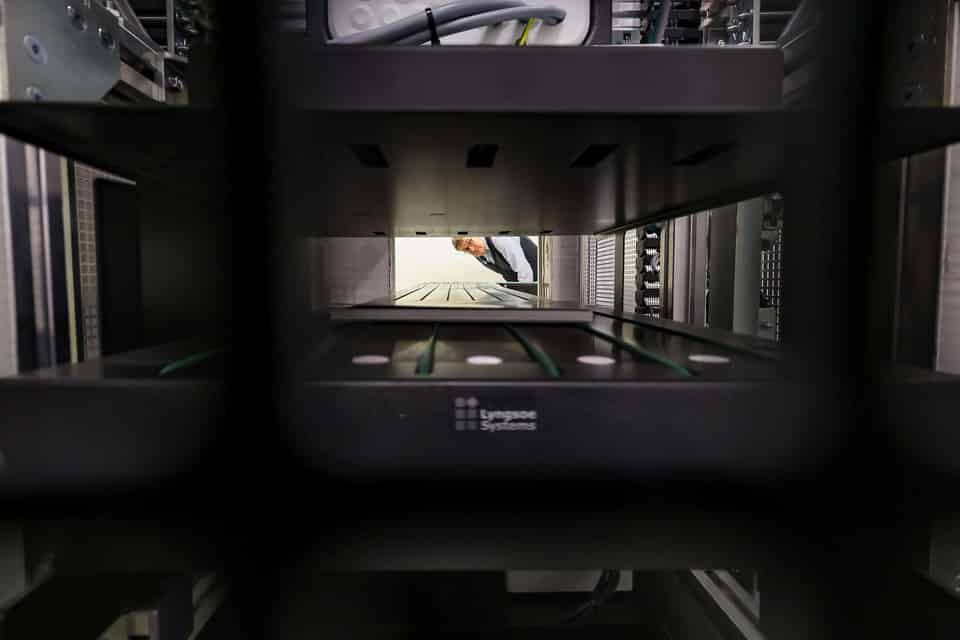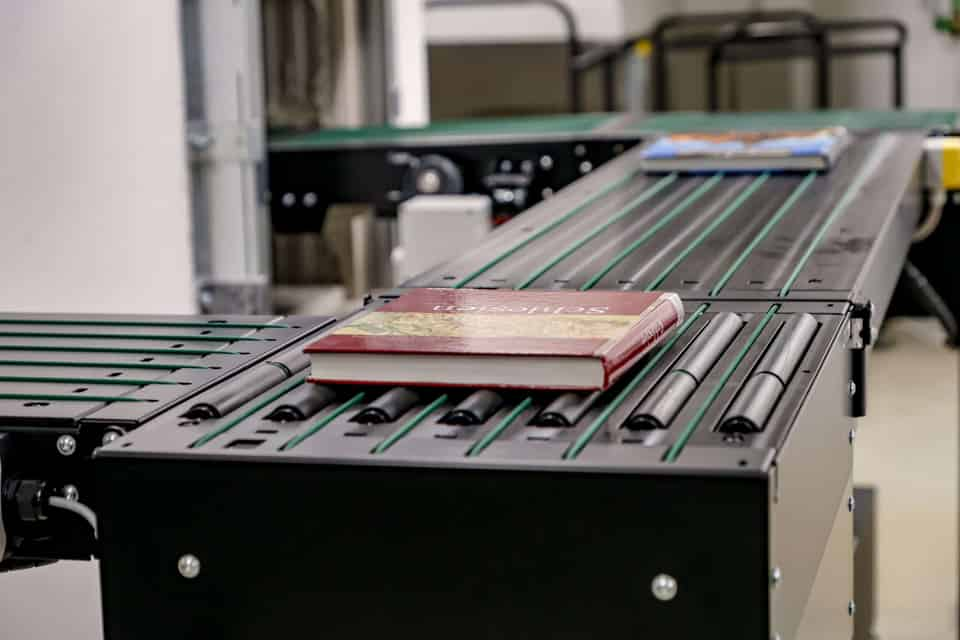Case Story: The Central Library of the city and State Library of Dortmund
Automatic book return in the central library of the City and State Library Dortmund
"The new return system gives our library customers the opportunity to return their borrowed media quickly, intuitively, and self-explanatory. The library team can use the time resources gained in this way to develop new service, consulting, and customer service offerings."
Markus Lohmann
Head of the Central Library
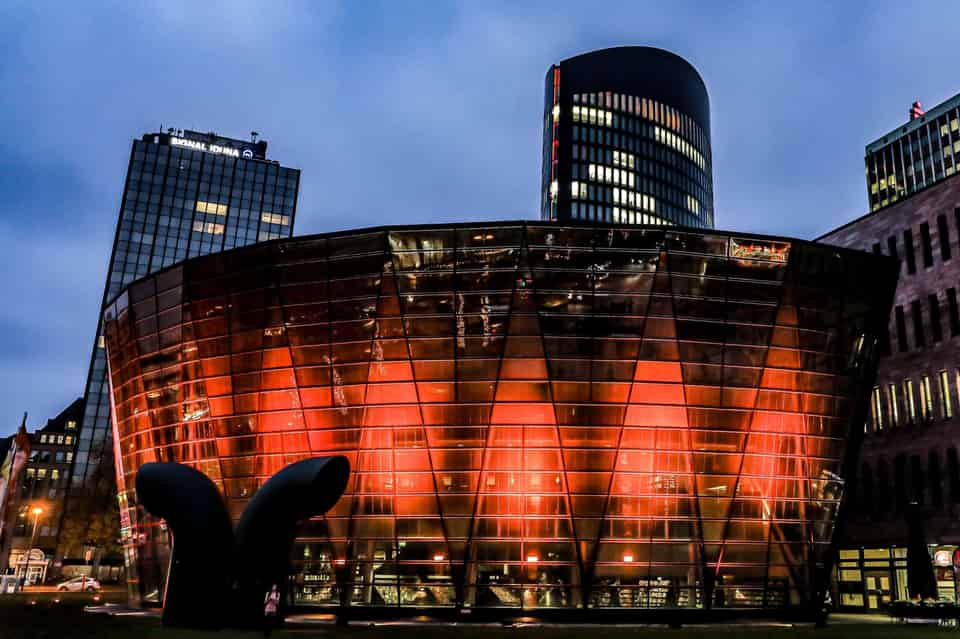
Initial situation and problem
The Central Library of the City and State Library of Dortmund was planned and built by the Italian architect Mario Botta in the 1990s. The library moved into the architecturally outstanding building opposite the main railway station in 1999 and since then has been welcoming around 2000 visitors a day. Until now, books were returned manually by staff at the return counter located in the entrance area of the library. The media were transported from here to the basement with a tub transport system and sorted manually onto the trolleys.
The installation of an automated return system funded by the Ministry of Culture and Science of North Rhine-Westphalia was intended to enable self-service returns. The system was to fit as harmoniously as possible into Mario Botta’s architecture and the interventions in the design of the counter area on the first floor were to be as small as possible. At the same time, it was to meet the highest standards in terms of functionality and ergonomics for both library customers and employees.
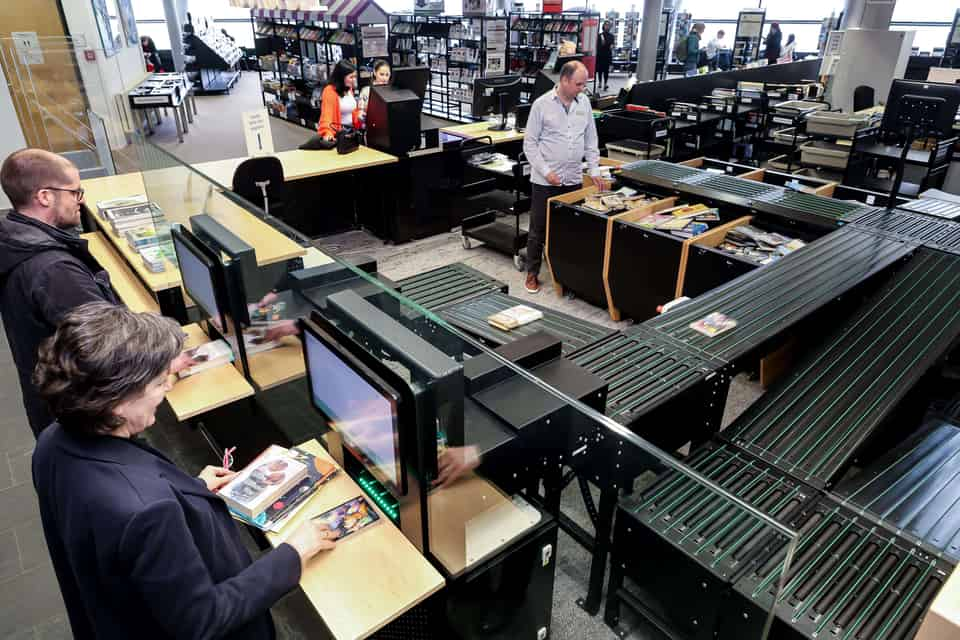
Return facility - planning and implementation
During the planning phase of the return system, which was entrusted to leistungsphase.architekturbüro – silge.werner.architekten PartGmbB from Nordkirchen, it quickly became clear that the spatial conditions on the first floor did not permit a complete realization of the system in this area. Therefore, it was necessary to transport media through the existing elevator shaft to the basement to place a part of the sorting system there. After an analysis of the composition of the returned media according to the different locations, a plant with 12 sorting destinations on two levels was planned. The media with a location on the first floor remain on this level during sorting, while the media with locations on the other floors are brought to the basement by means of a vertical transport and sorted there. It should also be possible to transport media back from the basement to the first floor.
To minimize the spatial effect in the entrance area of the library, it was planned to place the system freely behind the existing counters and to integrate the return machines into a glass wall.
In addition, the elevator with its superstructure should not exceed a height of approx. 2m. Due to the free installation of the system in the public area, the noise development during operation played an important role in the tender. In addition, the system was also to blend in well with the existing design.
As a result of the tendering procedure, Lyngsoe was awarded the contract for the installation of a return system. The system met all the requirements in terms of functionality and ergonomics and was also the most economical solution. By using inclined conveyor belts, it was possible to achieve the required height for the superstructure of the elevator and at the same time to position the system on the first floor in such a way that all sorting destinations are easily accessible, even with book carts. This and the ergonomically optimized collection bins and operating stations provide very good working conditions for the library staff employed in this area. The system offered also met the high requirements of the planning in terms of appearance and noise development.
‘’The new return system fits very well into the sophisticated architecture of our library and thus represents a real enrichment for our house, not only functionally but also visually.’’
Johannes Borbach-Jaene
Kulturbetriebe Dortmund, Deputy Executive Director, Head of Libraries & Director of the City and State Library
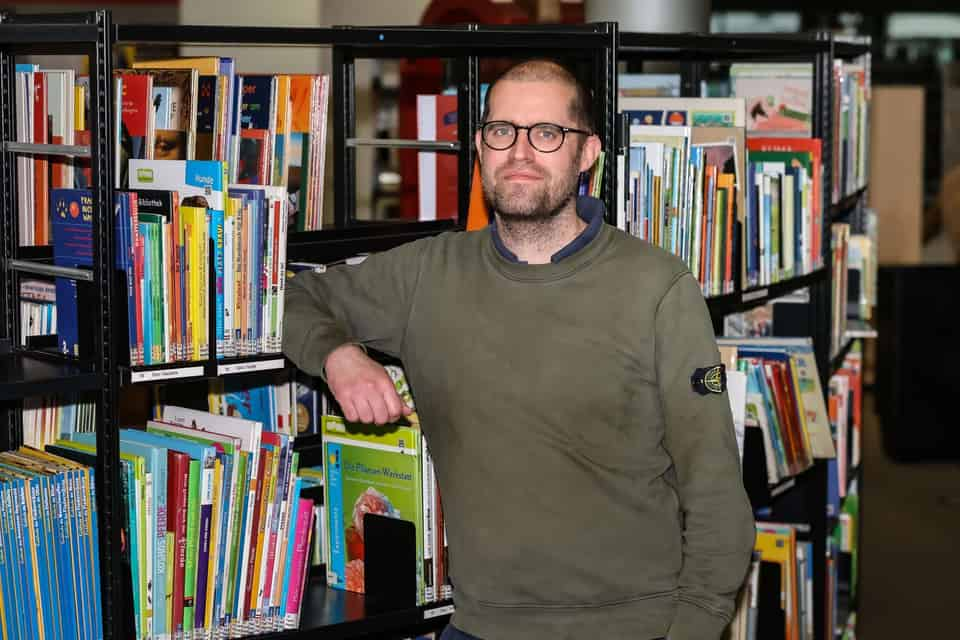
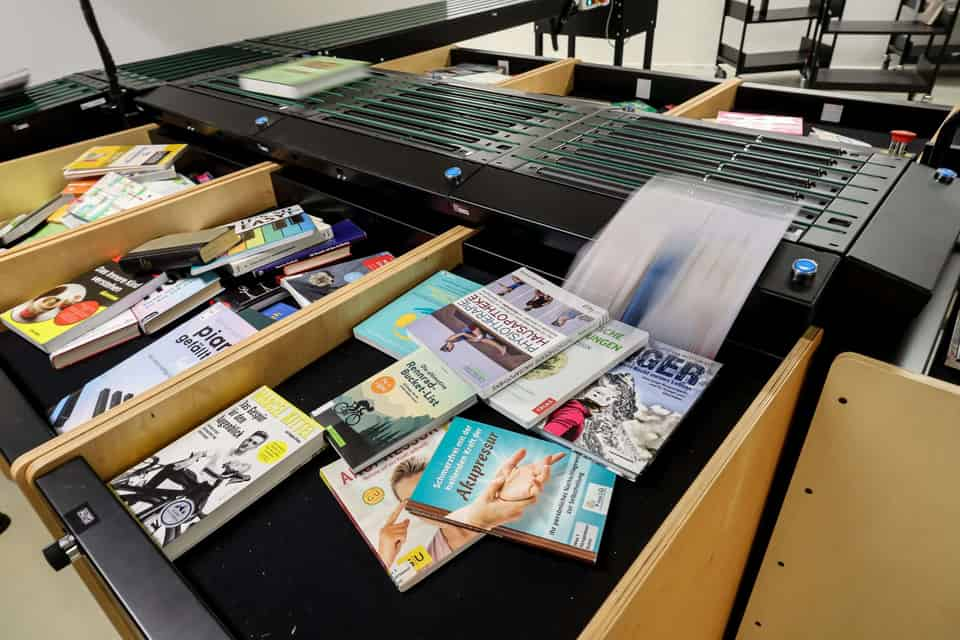
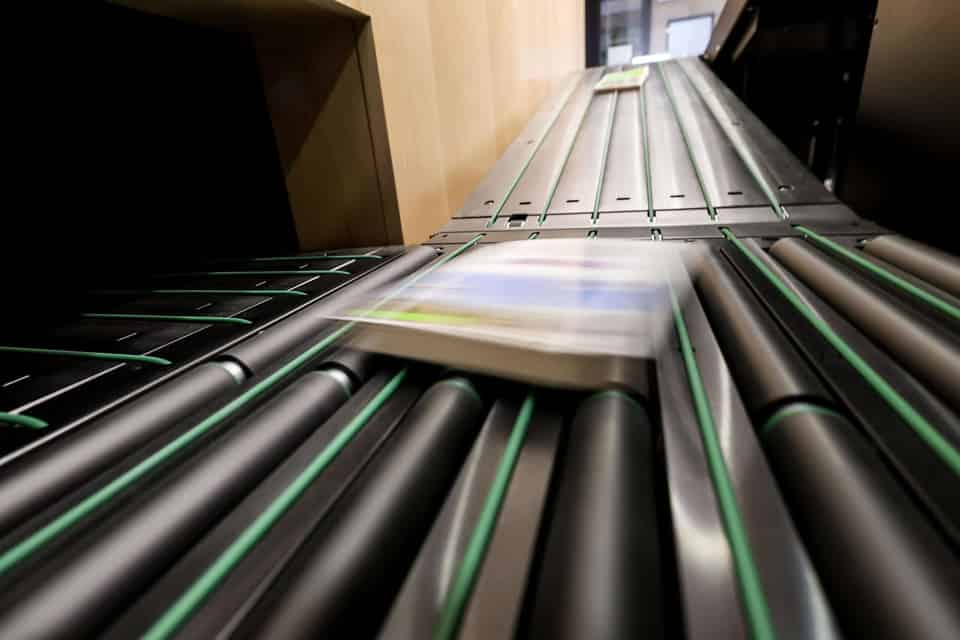
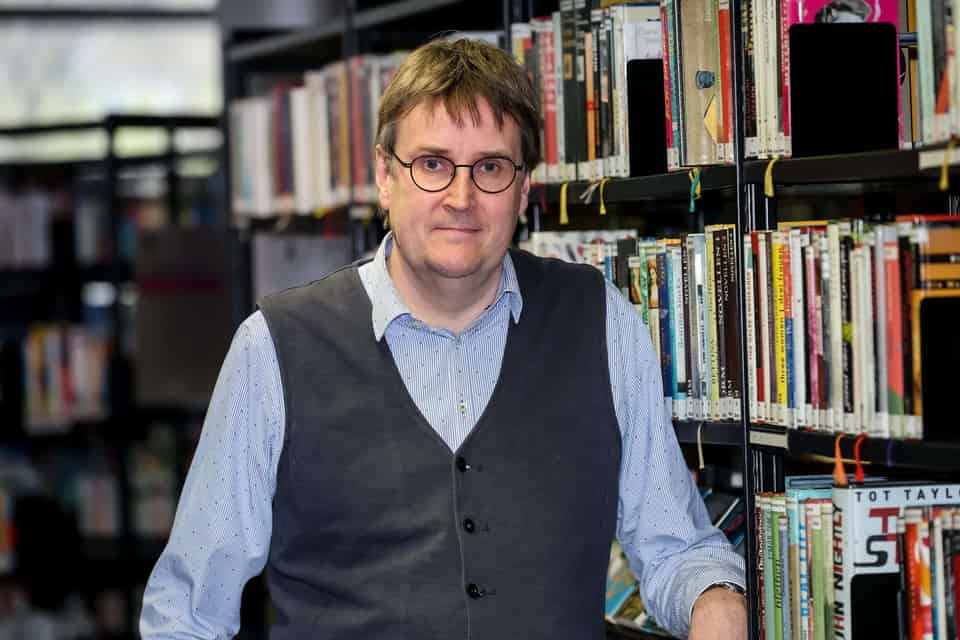
Initial experience with the new system
After more than six months with the return system in productive operation, the expectations have been more than fulfilled. In particular, the low noise level and the high speed with which the returned media are taken back and processed have convinced even initially sceptical colleagues. Even on very busy days, such as the first day of opening after the Christmas closure, there were no queues at the return desk. The transport of media by elevator is also largely trouble-free. The initial problems with certain magazine issues, which led to disruptions in the elevator area, were remedied by changing the sorting destinations. These media now remain on the first floor.
The library’s customers had no problems at all with the new return machines, so there was very little need for support from the start. The clearly visible traffic light control and the clear structure of the operating screen make operation child’s play. The freely placed system has a great fascination for the younger users, and the returned media are regularly followed with glances on their way to the collection bin.
In the event of an unplanned network failure, the return system proved to be very stable and immediately went into emergency booking mode, so that customers could continue to return media and return receipts were also issued. The return to regular operation was also immediate, and the staff stations available on both levels meant that the post-processing of media could be carried out quickly and without complications.
The newly rare malfunctions in the sensors could be reduced even further by implementing regular cleaning intervals in the form of vacuuming the sensors. Even the occasional malfunctions at the return stations, for example due to disconnected receipt printers, can now be quickly rectified by the personnel deployed in the area. Another positive aspect was that Lyngsoe’s customer service was always very quick to provide answers and solutions to any questions or problems that arose.
Overall, we observed a very stable and trouble-free operation. The return system enables the library to optimize staffing, so that an extension of opening hours to the previous closing day is planned for this summer. The Central Library of the City and State Library will then be open six days a week.
